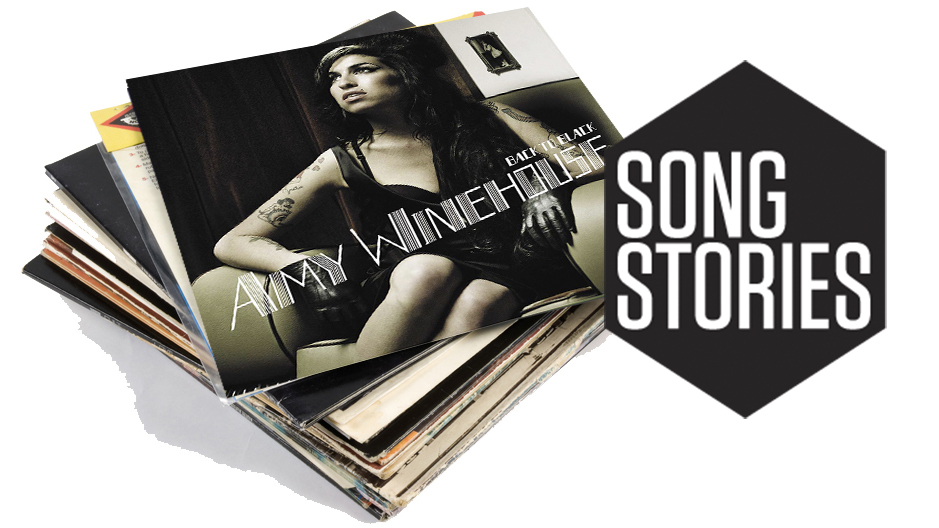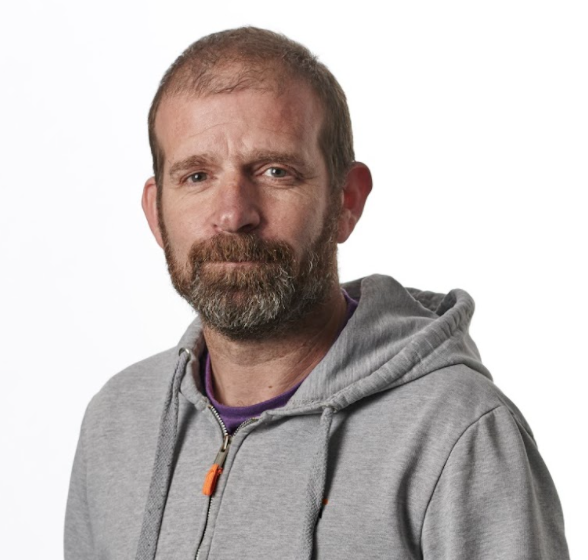The speedy creation of Amy Winehouse's Back to Black - Mark Ronson: “Damn, I wish it did take longer, because I would have more memories”
Mark Ronson and more on the making of a classic track, in their own words

Back to Black, the title track of Amy Winehouse’s second and tragically final studio album was recorded at Chung King Studios and Daptone Records in New York in March 2006, before the finishing touches were applied at Metropolis in London.
The album won numerous awards including Grammies for Record of the Year, Pop Vocal of the Year and Song of the Year (for Rehab), narrowly missing out on Album of the Year. Winehouse took home the Best New Artist of the Year, while Mark Ronson was named Producer of the Year (Non-Classical). To date, Back to Black has sold more than 16 million copies.
I instantly loved her
Mark Ronson
Speaking to NME earlier this year, producer Mark Ronson recalled the to-him all too rapid creation of Back to Black's backbone, focussing on the title track: “The six songs that we did on Back to Black together, we did in five to seven days.
“I always think, ‘Damn, I wish it did take longer’ because I would have more memories… it was just so quick.”
In a TikTok post (below), Ronson recalls their first meeting and the almost instant birth of the song’s backbone.
“I instantly loved her,” he says. “She played me all this great '60s music, and I got very inspired, and I came up with this piano part”.
@hipgnosissongs ♬ Back To Black - Amy Winehouse
Ronson quickly worked up the part, redolent of ‘60s girl groups, before moving on to crack the core of the classic sound required, in the same session. “I was like, ‘OK, what can I do to make this instantly evocative of the music she likes?’” he recalls in his breakdown of the track for Apple TV’s Watch The Sound, “and I was like, ‘Oh, I know what, I’ll cake this tambourine in reverb.’”
Get the MusicRadar Newsletter
Want all the hottest music and gear news, reviews, deals, features and more, direct to your inbox? Sign up here.
“I just had basic plugins,” Ronson confirms, adding that “A little bit of spring or plate reverb goes a very long way” in his also-excellent BBC Maestro series, in which he returns to the original demo project in Pro Tools, showing how he used reverb and distortion to create the dusty piano and drum sounds.
The next morning Winehouse returned to continue work on the song. “She came back the next day,” Ronson told Fader in 2015. “She didn’t really get animated about anything, ever - she just had this dead stare - so I thought what I did didn’t work.
“And then she just looked at me and said, 'I love it. That’s what I want my whole album to sound like.' So she stayed for another five days, just me and her.”
Daptones magic
The next challenge was fully capturing the vintage feel both now agreed would define the album’s sonic approach. Brooklyn’s Daptone Records, up the road from Ronson’s own New York HQ, offered the perfect solution.
Its all-analogue, strictly tape studio - complete with Trident Series 65 24–input desk, restored 3M M23 quarter–inch two–track deck, Otari MX5050 quarter–inch tape machine and more - plus killer in-house band The Dap-Kings, who would back the Ronson produced tracks on the album, specialised in faithfully recreating the soul-drenched Stax and Motown feel required.
"There's an old–school feel to the studio, but it's by no means some kind of vintage museum," Roth told Sound on Sound. "Show me a computer that sounds as good as a tape machine and I'll use it."
Before recruiting The Dap-Kings, “We were using every computer trick in the book to make it sound old,” Ronson told The New York Times. “But it was just so ridiculous."
Show me a computer that sounds as good as a tape machine and I'll use it
Gabriel Roth, Daptone
“That was, like, the most professional thing we’d done to date,” Dap-Kings guitarist Binky Griptite told billboard.com. “We’d just been doing our own thing and on our own time in Gabe’s studio, or were at home smoking weed and working on our own schedule.
"We weren’t used to having another producer being in there, like, ‘Okay, we gotta knock this out by five.’ I mean, we’d had a taste of it, but it was still in the early days.”
We weren’t used to having another producer being in there, like, ‘Okay, we gotta knock this out by five.’
Binky Griptite, The Dap-Kings guitarist
Daptone head honcho and Dap-Kings bass player Gabriel Roth recalled the sessions as “something we spent a handful of afternoons knocking out real quick so we can pay some rent.”
“It was a good, honest piece of work,” he continued, speaking to The New York Times, “but our music is something we’ve been working on together as a family for a dozen years, and it’s a product of a lot of love and creativity.”
Winehouse laid down her vocals before Ronson worked with Daptone head honcho Roth and Dap-Kings drummer and band leader Homer Steinwess to complete the recordings, committing everything to actual tape, in line with the Studio’s strict ‘no Pro Tools’ ethos.
Mix engineer Tom Elmhirst discussed the results with Sound on Sound in 2007: “The bulk of the recordings for the songs that Mark produced on the album were done at the studio of this band called the Dap-Kings, in Brooklyn, New York.
“They recorded drums, piano, guitar and bass all together in one room. The drums were recorded with one microphone, and there's lots of spill between the instruments, which was great.
"Mark then came to London to record strings, brass and percussion in one of Metropolis's tracking rooms.”
"I don't want any fucking strings"
That was the sneaky part: “I had to do the orchestra behind her back,” Ronson told Fader. “I said, 'Amy, The Shangri-Las, the Phil Spector shit that you love, it’s the orchestra that’s doing a lot of that work'. She was like, 'Nah, I fucking hate it. It’s Disney bullshit'.”
This put arranger Chris Elliot, the man tasked with adding the bullshit, in a tricky situation; speaking to Uncut magazine he said “Mark Ronson, Darcus [Beese, from Island Records] and Tom [Elmhirst] heard the mixes and felt there could be another colour in the tracks.
She had her head down on the desk, and I was kind of terrified. When the song was done, she looked up, beaming, and said, 'OK, you can leave it in'
Mark Ronson
“Tom mentioned strings. Amy wasn’t really a fan of the idea of strings. In fact she said very, very bluntly to Mark, ‘I don’t want any fucking strings on the record'.”
Ronson picks up the story (Fader): “She didn’t hear it until Love Is a Losing Game. She had her head down on the desk, and I was kind of terrified. When the song was done, she looked up, beaming, and said, 'OK, you can leave it in'.
“You know, the production was really a Trojan Horse. It dressed the music up to get it through the wall, but that’s not why the record is what it is. It’s her.”
Next up, the final mix was completed at Metropolis.
Elmhirst: “For me, the mix had to have a contemporary feel to it as well, while Mark wanted to keep the mix sparse and not over-produced. I love Amy's voice and the vibe of the track, so mixing was a matter of getting the feeling right, with the brass, strings and percussion, but also getting it up to date beat-wise, so that it would work for radio without losing any of its charm.
“Although there's quite a lot going on in these tracks, they hopefully don't sound ridiculously complicated. The mix came together quite quickly because I knew exactly what I wanted to do."
The finished product is a stone-cold classic, a fitting centrepiece to the album that definitively captures a generational talent gone too soon.
Ronson himself still feels the reverberations, as he told NME: "I can sometimes hear ‘Back To Black’ in some restaurant in the background and it does nothing, and then I’ll hear it on another occasion in, like, the lobby of a hotel, and it has a really heavy effect on me.
“I mean, she’s definitely there. I couldn’t tell you like, three days a week or whatever. She’s just there ‘cause I feel like… she kinda put me on the map, so all of my success and everything I’ve had since is somehow linked back to this thing, you know?"
Coda
But let's end on a happier note. Recalling the recording of Valerie, Winehouse's smash hit Zutons cover, Ronson told Yahoo entertainment, “The really lovely thing about that session was she had never met the musicians from the Dap-Kings, the people that had played on Back to Black, because we wrote and arranged the songs that she wrote, I arranged the songs while she was in New York, and then she had to go back to London, and then we tracked it with the band."
Talking to Fader again: "We went to Brooklyn so she could finally go to Daptone and meet the guys who played on the record.
"She’s so charming; she was there sitting in the room, just laughing. I remember seeing her walk down the street on the way out, walking on top of the yellow lines. It was one of the last times I saw her carefree and anonymous.
"It was really a lovely day."



I'm lucky enough to be MusicRadar's Editor-in-chief while being, by some considerable distance, the least proficient musician on the editorial team. An undeniably ropey but occasionally enthusiastic drummer, I've worked on the world's greatest music making website in one capacity or another since its launch in 2007. I hope you enjoy the site - we do.









